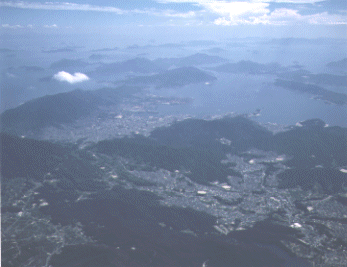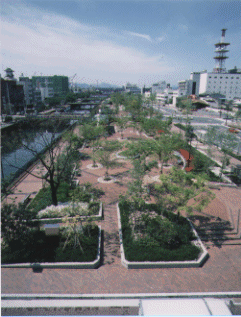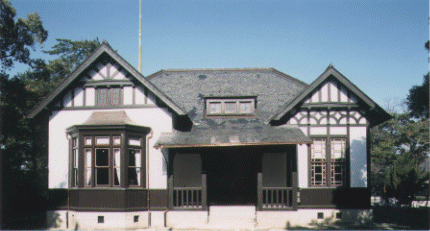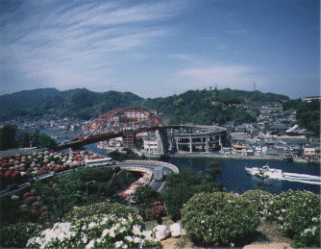Meaning of the city symbol

|
|
 |
Kure is surrounded by 9 mountain peaks. These peaks gave the city its name,
which derives from the word "Kyuryou", an alternative, literary term for nine
mountain peaks. The city symbol is a 9-pointed star formed with the letter
"Re" of the Japanese Katakana alphabet. Within this symbol is the character
for City written. This symbol has been decided upon on March 26, 1903. |
Kure has always had a close relationship to the sea. The gentle and beautiful
Inland Sea of Japan has bestowed many blessings on this region and the city
flourished as an important point of marine traffic. |
 A Town Area
|
Walking through the city you will notice in many places red bricks. Red
bricks have been extensively used in the main street of Kure, the so-called
"Brick Avenue" and other streets like Kuramoto road for the sidewalk and many
buildings. This bright city picture blends beautifully with the green of trees
and sometimes even gives the impression of a foreign place. The "port town"
air is thus enhanced. |
 Kurmoto road
|
 "Irifuneyama" Memorial
|
In 1889 this 2-storied western style wooden building was erected as a site
for military conferences and simultaneously supervision of marine traffic.
Three years later in 1892 the Commander-in-Chief started to use it as
residence. |
 Seto (Inland Sea of Japan) Park of Ondo
|
Ondo of the Inland Sea of Japan is a 70-meter wide strait located between the
coast off Kure and the Kurabashi island. Tradition has it that
Taira-no-Kiyomori here called for the tranquil sunset with a golden fan and
opened it within one day. The sea viewed from red loop bridge reflected in the
waters of Ondo-no-Seto of the Inland Sea of Japan appears very quiet and
peaceful. While the peaceful sound of ships is Sometimes heard this places
allows the visitors to rest. |